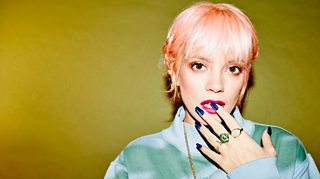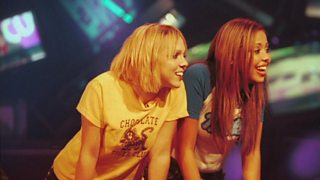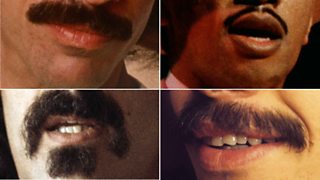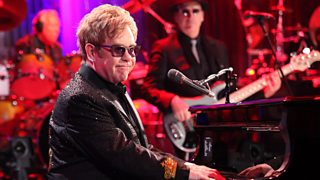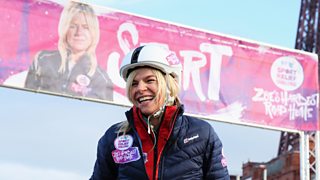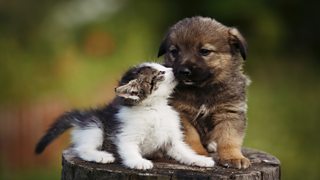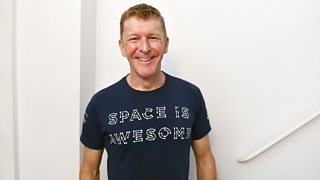From Uptown Funk to Stranger Things: How the 80s still dominates modern culture
By Jeremy Allen, 2 August 2018 (updated 9 August 2019)
Radio 2 explores the glossy world of the 80s film soundtrack with Gremlins, Goonies and Ghostbusters – Screens of the 80s (available Friday 9 August 2019, from 8pm).
A throwback feast for the ears, introduced by top film critic Mark Kermode, and featuring the BBC Concert Orchestra and Capital Voices conducted by Richard Balcombe.
It’s a journey through many of the great soundtracks of the era, celebrating the oeuvre of some of the world’s finest composers, from John Williams to Ennio Morricone.
Remembered as the decade of shoulder pads, neon colour combinations and mobile phones as big as cereal packets, the 80s were actually much more than those clichés - and its influence can still be seen in film, TV, music and fashion to this very day.
Here's our look at how the 1980s is still with us and never really went away.
- For the best 80s music, listen to Radio 2's Sounds of the 80s, with Gary Davies playing classic hits from the decade (new episodes Fridays, from 10pm).
The movie soundtrack became almost as important as the film itself
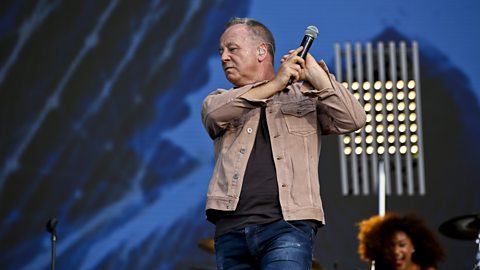
Simple Minds
The Scottish legends play a blinding show for their home crowd.
Kermode is right to pick out the 80s as a major decade for movie scores. Successful soundtracks were nothing new to the 1980s, of course, but it was during this decade that soundtracks became an essential component of a big picture, helping to galvanise the relationship between music and film even further.
Footloose, Flashdance and Dirty Dancing were all soundtracks you could expect to hear right alongside the hits of the day. There was also a shift towards new original tunes made especially for movies. In fact, Don’t You (Forget About Me) by Simple Minds was commissioned specifically with John Hughes picture The Breakfast Club in mind.
Soundtracks are just as much of a big deal now - and big business too. Music's most celebrated stars have been getting involved as well - from former Pop Will Eat Itself frontman Clint Mansell's transformation into one of the most in-demand composers (working on Darren Aronofsky pictures Requiem for a Dream, The Wrestler and Black Swan) to Radiohead's Jonny Greenwood regular moonlighting as a film scorer and ripe collaborator for Paul Thomas Anderson. Meanwhile, just this year has seen Kendrick Lamar's Black Panther OST is among many's albums of the year lists so far. It's not difficult to see how the 80s paved the way for this.
Blockbuster franchises came into their own too
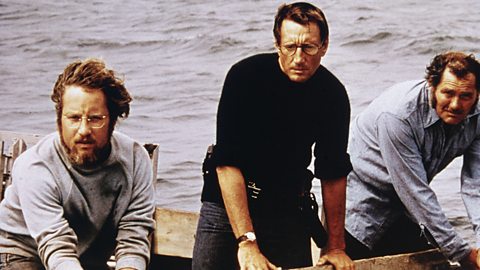
Excerpt of Main Theme from Jaws performed by the BBC Concert Orchestra
The sound of many a ruined swim at the beach.
When Jaws returned to the water for a sequel in 1978, many were surprised to see the shark back so soon after being blown up with a scuba tank at the end of the first film. However, the following decade saw blockbuster sequels become the norm.
After Empire Strikes Back followed Star Wars in 1980, a glut of franchises kept film fans returning to picture houses: Indiana Jones, Beverly Hills Cop, Star Trek, Batman, Ghostbusters, Back to the Future and so on.
While the Star Wars, Star Trek and Indiana Jones franchises are all still going strong, many have also evolved and grown with the times - such as the all-female reboot of Ghostbusters released in 2016. Meanwhile, the Marvel Cinematic Universe and DC Extended Universe have taken the idea of movie franchises to a whole new level with countless spin-off and standalone films. We are expecting a new DC film later in 2018 in the form of Aquaman, while Marvel has released three movies (Black Panther, Avengers: Infinity War Ant-Man and the Wasp) so far this year - and this doesn't look likely to slow down any time soon.
The decade’s biggest music icons still inspire the stars of today
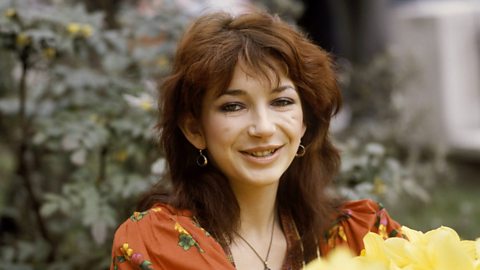
The Sounds Of The 80s Kate Bush Mastermix
The LEGEND that is Kate Bush turns 60 this week - we celebrate with her biggest 80s hits.
Many of the pop icons that we count as all-time heroes today dominated the 80s: David Bowie, Prince, Michael Jackson, Kate Bush and Madonna among them.
Jacko and Prince's cultural impact in the 80s is well-noted (and we'll come to that later), but it's worth noting how the 1980s was when Bowie truly proved himself as a shape-shifting, once-in-a-generation icon. His influence and stardom spanned decades, of course, but it was in the 80s that he began to cement his reputation. 1983's Let's Dance - Bowie's 15th studio LP - sold a massive 10 million copies, making it Bowie's best-selling record. The aesthetic of Let’s Dance-era Bowie has since inspired the likes of Lady Gaga, while the song itself has been sampled by everyone from Craig David to Flight of the Conchords.
Likewise, Kate Bush was an artist synonymous with the 70s who made some of her most assured and groundbreaking work with mid-80s albums like 1985's Hounds of Love and 1989's The Sensual World. With Bush, who turned 60 on Monday, it's more a case of who she hasn’t influenced than who she has, but her presence can certainly be felt in the music of Florence + the Machine, who has long been touted as this generation's version of the Cloudbusting star.
Madonna meanwhile, a bona fide artist of the 80s, has influenced everyone from Britney Spears to Beyoncé. Queen Bey has pointed to Madge's business-savvy nature as a key source of inspiration, saying in an interview: "I felt like I wanted to follow the footsteps of Madonna and be a powerhouse and have my own empire and show other women when you get to this point in your career, you don't have to go sign with someone else and share your money and your success - you do it yourself."
80s funk has reappeared in modern hits

Janelle Monae: "He was a mentor and friend to me"
American singer-songwriter and actress Janelle remembers the power and energy of Prince.
While funk actually emerged in the mid-60s, sheeny funk/soul with an electronic tinge was very particular to the 80s... and to now. From Mark Ronson's Uptown Funk to Daft Punk's Get Lucky, the biggest hits of the past few years have been heavily indebted to Prince, Michael Jackson and co.
Chic’s Nile Rodgers, who teamed up with Daft Punk and Pharrell Williams for Get Lucky, was one of the architects of how the 1980s sounded, producing albums by David Bowie, Madonna and Duran Duran and making a pretty massive contribution to pop as a whole.
It’s hard not to watch a performance by Christine and the Queens or hear a groove by Janelle Monáe and not think of the likes of Jackson or Prince. "Prince is a world. Prince is a universe. It’s hard for me to even speak his name because he was a mentor and friend to me," Monáe recently told Radio 2's Ken Bruce. "There will never be another writer, or producer or artist like Prince."
Hip-hop went global... and grew even bigger
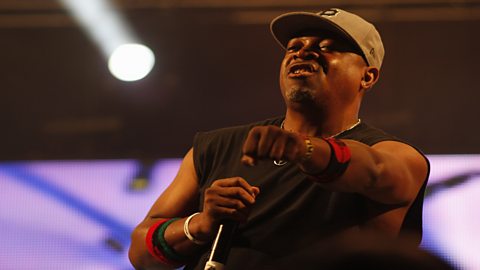
Guy Garvey on Public Enemy: "Modern, Vital and Musically Brilliant"
Guy tells the story behind Public Enemy's By The Time I Get To Arizona.
Hip hop emerged from the block parties of the Bronx, New York in the late 70s, but it didn’t make its way into the mainstream until the early 80s with the likes of Grandmaster Flash & The Furious Five. By the mid-80s, the charts were full of the likes of Run DMC and The Beastie Boys. Meanwhile, Public Enemy brought the noise towards the tail end of the decade.
Rap music remains a dominant force in modern music - creatively, critically and commercially. Drake, Kanye West, Kendrick Lamar and Nicki Minaj are among the world's most popular and revered artists, with Lamar even being awarded with the Pulitzer Prize For Music earlier this year.
Pop stars became more human
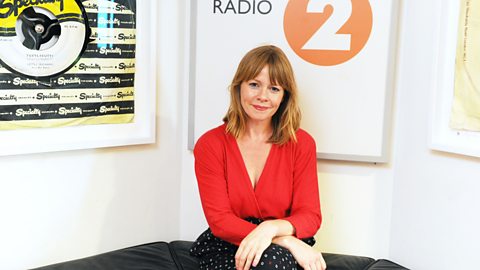
Emma Jones: "Everybody loved 'Smash Hits'."
Former 'Smash Hits' editor and journalist Emma discusses her novel 'Supernova Hangover'.
Before the 80s, pop stars were like another species - glamorous, aloof, impossible to reach. Sure, those loveable moptops The Beatles pioneered pop fan clubs, but it wasn't until the likes of Smash Hits, an irreverent and much missed weekly pop magazine, that our relationship with pop acts transformed, making things feel a little more egalitarian. Smash Hits helped break down the walls between artist and fan, bringing stars (quite literally) into homes and making them feel a lot more like us. Every week felt like catching up with one of your bezzies.
Nowadays, the stars are but a tweet away, even if you are one of about 50 million followers. Pop icons of today are much more approachable and interactive, documenting their lives online and engaging with their fan communities. In turn, pop fandoms are more powerful than ever - their online backing can make the rest of the music world sit up and take notice of their favourite artist, get them playlisted on radio and even help them break into the charts. Without the likes of Smash Hits in the 80s, this change in pop may never have happened.
Without the 80s, we wouldn’t have some of our best shows right now

What do the cast of Stranger Things think about the 80s?
Millie Bobby Brown and Noah Schnapp tell Dermot about their favourite 80s discoveries!
If the 80s are all the rage right now then Stranger Things may have had something to do with it. The Netflix show cleverly pays homage to films from the decade - Gremlins, Goonies and Ghostbusters included - while putting its own creative twist on the sci-fi/horror genre. It also features several stars of the era too: Winona Ryder, who first came to our attention in 1988 in Beetlejuice and Heathers, appears as well as Sean Astin (aka Mikey from The Goonies). Meanwhile, newcomer Dacre Montgomery bears a strong resemblance to St Elmo’s Fire-era Rob Lowe (and you don’t get much more 80s than Rob Lowe).
There are plenty of other shows putting their own spin on the era: The Americans, GLOW and Wet Hot American Summer included. The UK has been keeping its end up too, with Robert Popper and Peter Serafinowicz’s Look Around You, and Lisa McGee’s lauded Northern Irish comedy drama, Derry Girls.
We also wouldn’t have the 'French Tuck'...
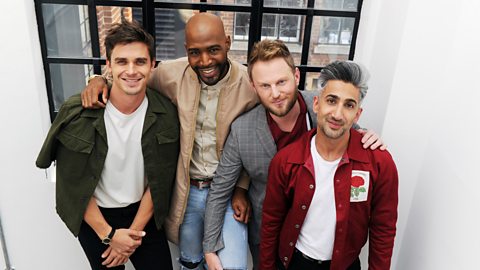
Queer Eye..For The Doncaster Guy?!
Tan France tells Simon & Jo where he would take his co-stars on a tour of his hometown.
The 90s may be a prime source of fashion re-appropriation for many millennials (we've even seen the unlikely return of the bum bag), but there's one current trend that we have the 80s to thank for.
In the 1980s, it was the done thing to tuck yourself in, if only to stop your grandmother from chiding you. Thanks to hit show Queer Eye though, tucked shirts are now back in and have a fancy new name: the French Tuck. Yes, tucking your top into your jeans and exposing your belt buckle is all the rage, a turn of events that suggests Simon Cowell is way ahead of the game not only in discovering new vocal talent but also in fashion too. Who knew?!
- Get a taster of Screens of the 80s with two clips, featuring Mark Kermode’s memories of meeting Leslie Nielson, star of Airplane! and The Naked Gun, and E.T.!
Related links
Like us on Facebook, on Instagram at bbcradio2, or follow us on Twitter @BBCRadio2
Listen to Radio 2 on BBC Sounds, or find out other ways you can listen.

